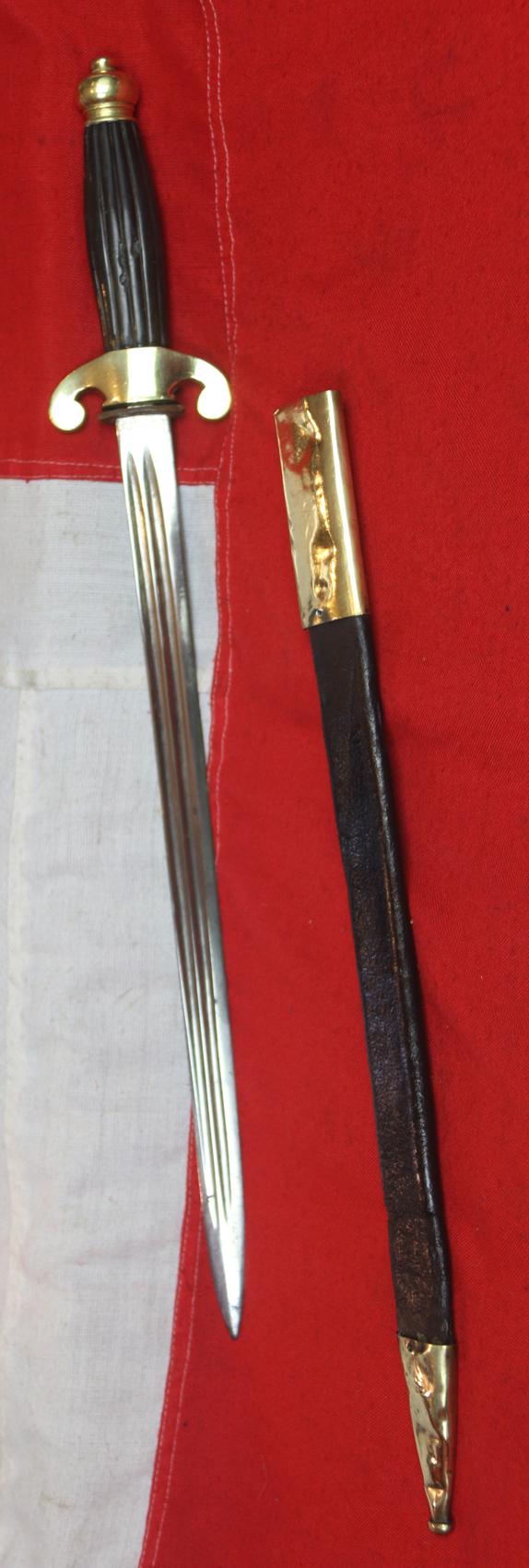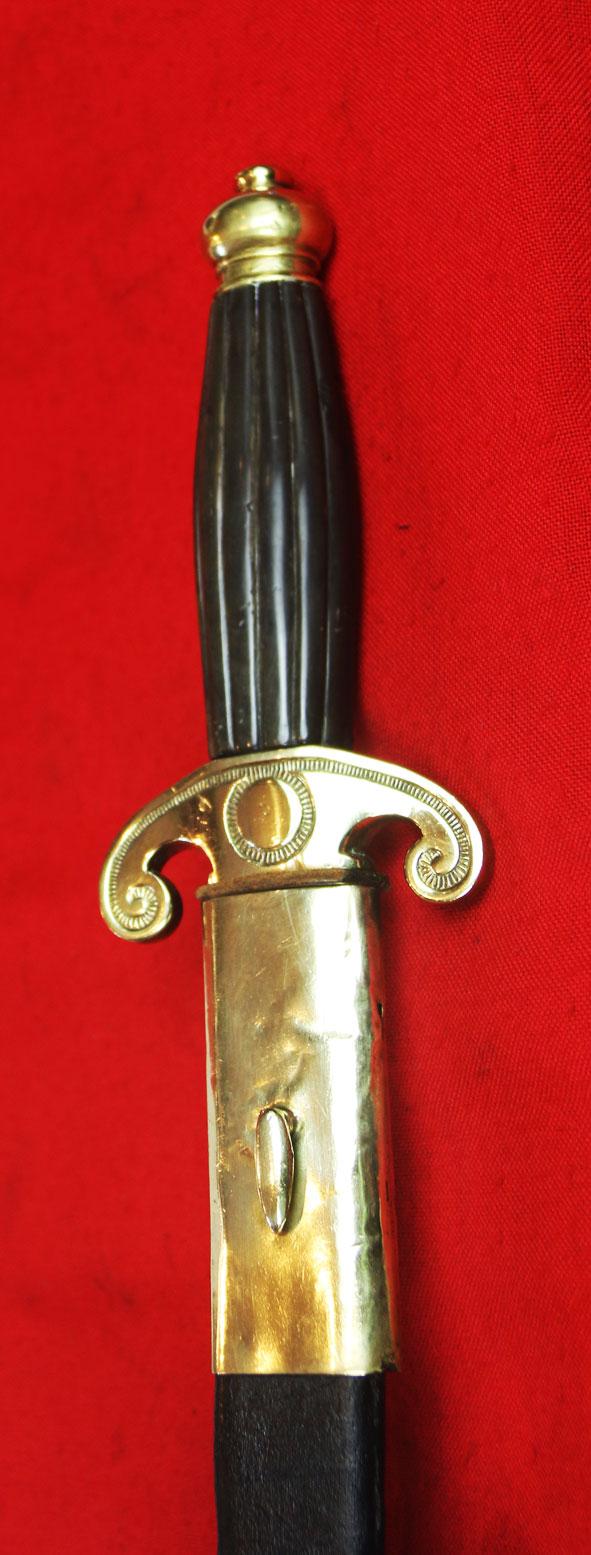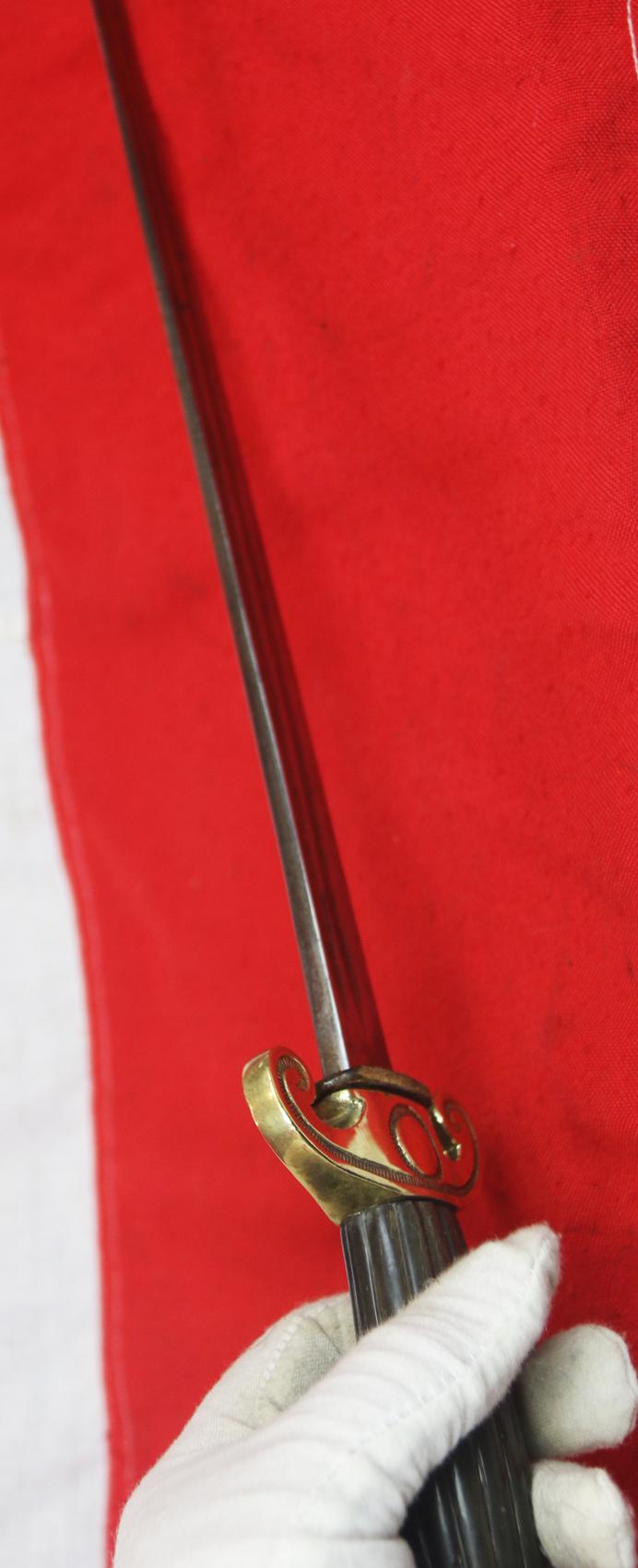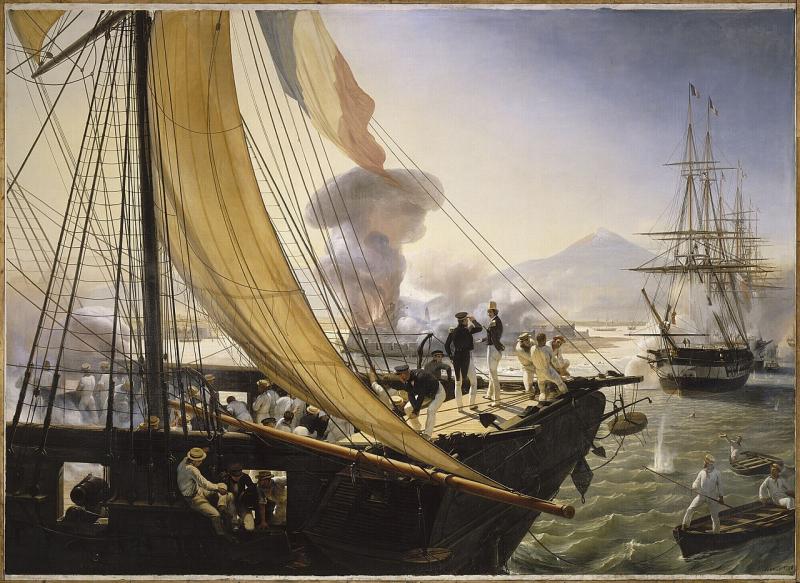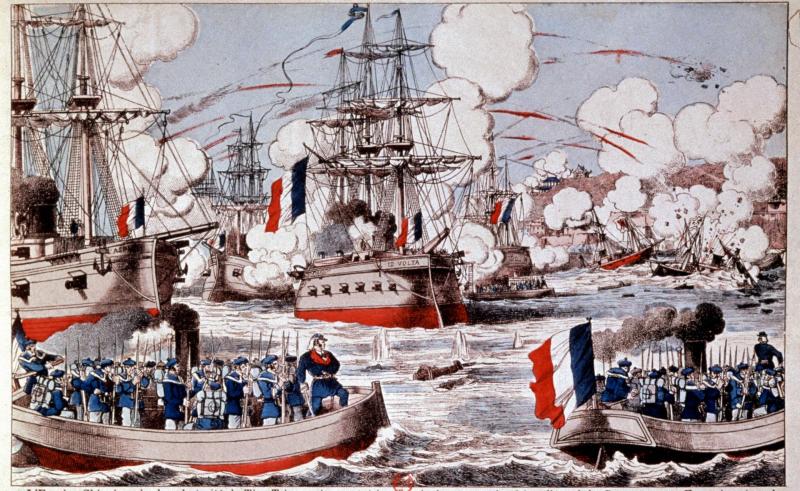A Beautiful Mid 19th Century Napoleon IIird French Naval Officer's Dirk. Poinyard D'Officier de Marines
Just arrived back from six full days expert artisan hand cleaning and conservation to remove antique applied surface preservative lacquer, and thus to reveal all its original polish beneath.
Although mid 19th century it very much has it's design roots in the Napoleonic Directoire and Ist Empire period. Brass double ovoid pommel with ribbed carved horn grip. Down scrolled quillons. Brass mounted leather scabbard
Carried by a French naval officer up to the Franco Prussian War and Sino-French War of the later 19th century.
The Franco-Prussian War
To relieve pressure from the expected German attack into Alsace-Lorraine, Napoleon III and the French high command planned a seaborne invasion of northern Germany as soon as war began. The French expected the invasion to divert German troops and to encourage Denmark to join in the war, with its 50,000-strong army and the Royal Danish Navy. It was discovered that PrussiaFlag of Prussia
The Kingdom of Prussia was a German kingdom that constituted the state of Prussia between 1701 and 1918. It was the driving force behind the unification of Germany in 1871 and was the leading state of the German Empire until its dissolution in 1918. Although it took its name from the region called Prussia, it was based in the Margraviate of Brandenburg. Its capital was Berlin.
They had recently built defences around the big North German ports, including coastal artillery batteries with Krupp heavy artillery, which with a range of 4,000 yards (3,700 m), had double the range of French naval guns. The French Navy lacked the heavy guns to engage the coastal defences and the topography of the Prussian coast made a seaborne invasion of northern Germany impossible.
The French Marines and naval infantry intended for the invasion of northern Germany were dispatched to reinforce the French Army of Châlons and fell into captivity at Sedan along with Napoleon III. A shortage of officers, following the capture of most of the professional French army at the Siege of Metz and at the Battle of Sedan, led naval officers to be sent from their ships to command hastily assembled reservists of the Garde Mobile. As the autumn storms of the North Sea forced the return of more of the French ships, the blockade of the north German ports diminished and in September 1870 the French navy abandoned the blockade for the winter. The rest of the navy retired to ports along the English Channel and remained in port for the rest of the war.
The Sino-French War
The Battle of Fuzhou, or Foochow, also known as the Battle of the Pagoda Anchorage (French: Combat naval de Fou-Tchéou, Chinese: 馬江海戰, 馬江之役 or 馬尾海戰, literally Battle of Mawei), was the opening engagement of the 16-month Sino-French War (December 1883 – April 1885). The battle was fought on 23 August 1884 off the Pagoda Anchorage in Mawei (馬尾) harbour, 15 kilometres (9.3 mi) to the southeast of the city of Fuzhou (Foochow). During the battle Admiral Amédée Courbet's Far East Squadron virtually destroyed the Fujian Fleet, one of China's four regional fleets.
Internationally, Napoleon III tried to emulate his uncle Napoleon Bonaparte, engaging in numerous imperial ventures around the world as well as several wars in Europe. He began his reign with French victories in Crimea and in Italy, gaining Savoy and Nice, and very briefly, Venetia (before in turn ceding to Italy). Using very harsh methods, he built up the French Empire in North Africa and in French Indochina. Napoleon III also launched an intervention in Mexico seeking to erect the Second Mexican Empire and bring it into the French orbit, but this ended in a fiasco. He mishandled the Prussian threat, and by the end of his reign, the French emperor found himself without allies in the face of overwhelming German forces. His rule was ended during the Franco-Prussian War, when he was captured by the Prussian army at Sedan in 1870 and dethroned by French republicans. He died in exile in 1873 in England.
In very nice condition overall with surface dings to the scabbard mounts and small indented marks on the horn grip.
Code: 25470



